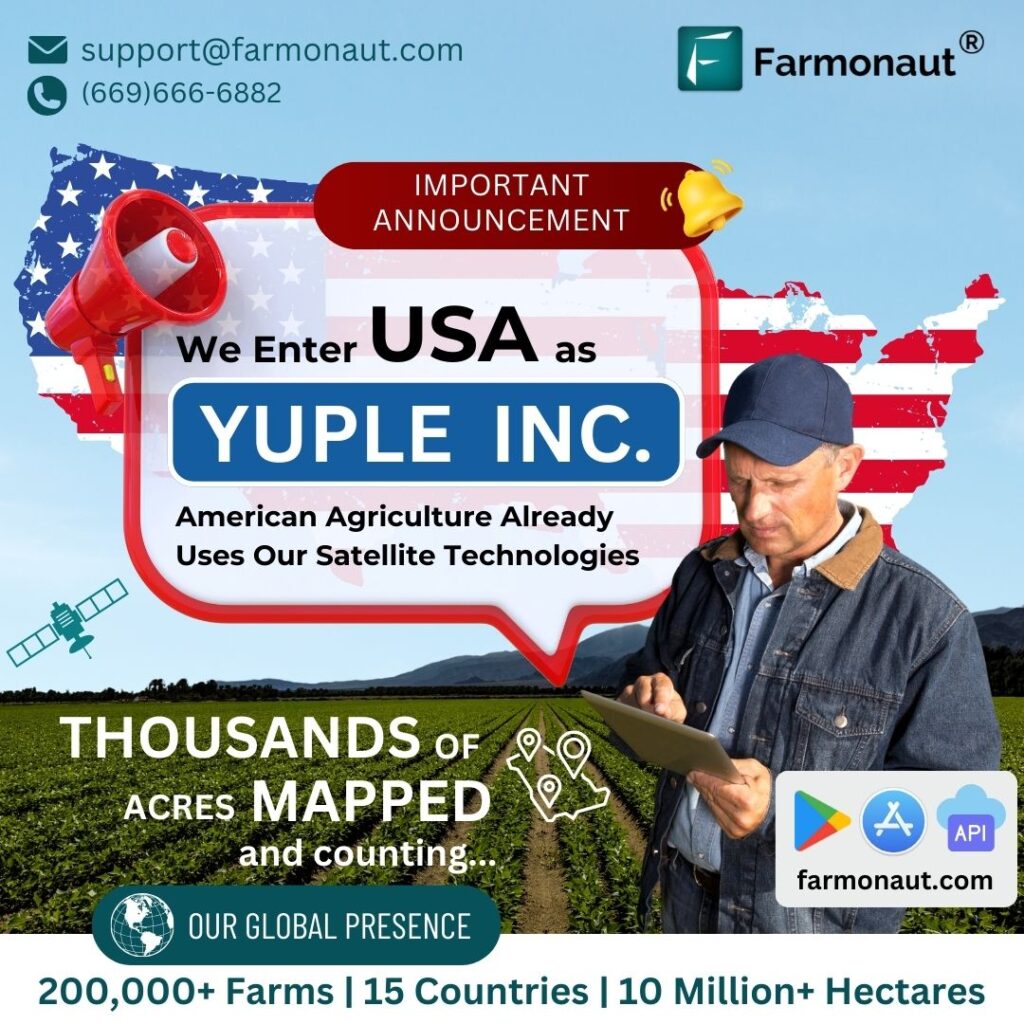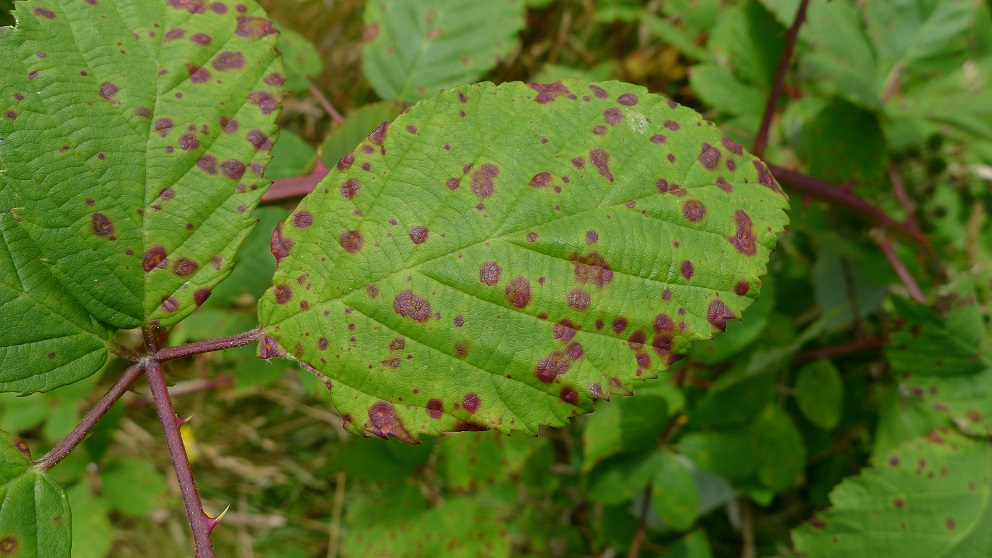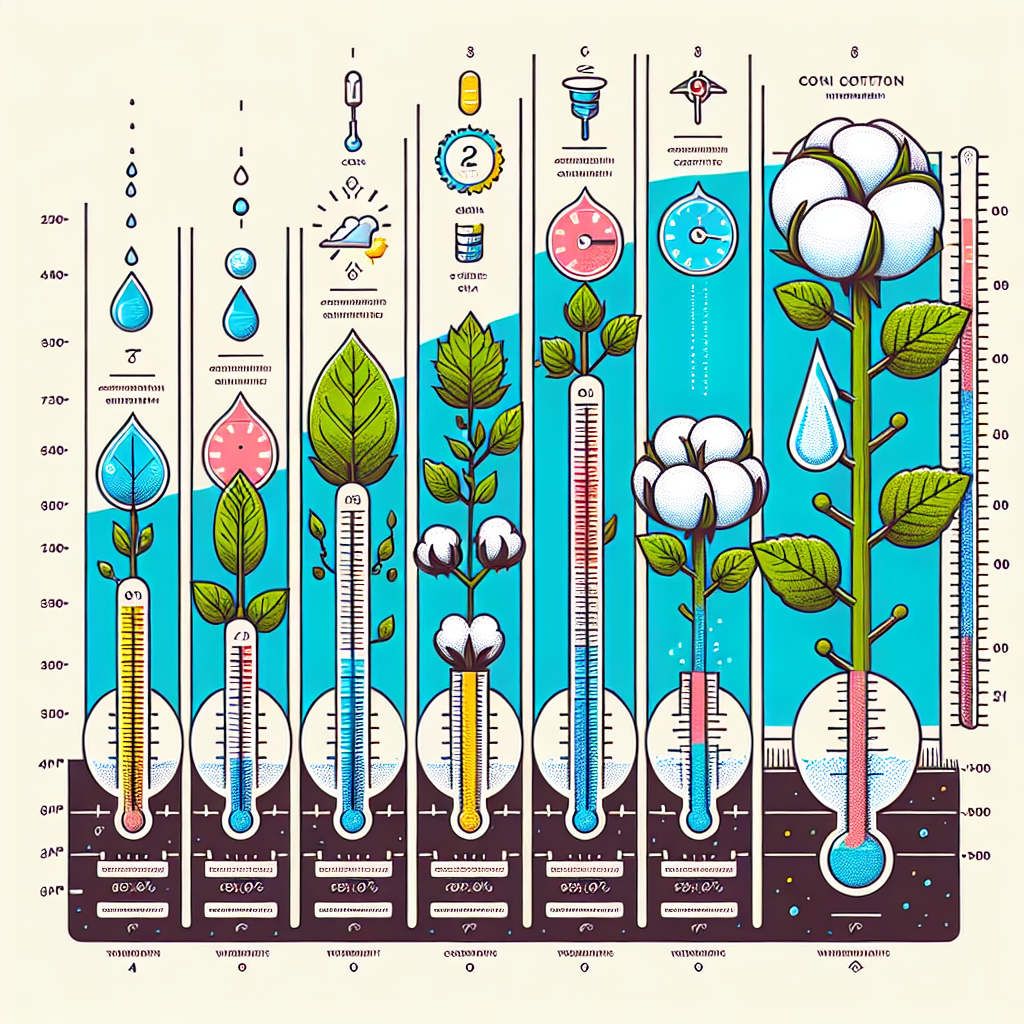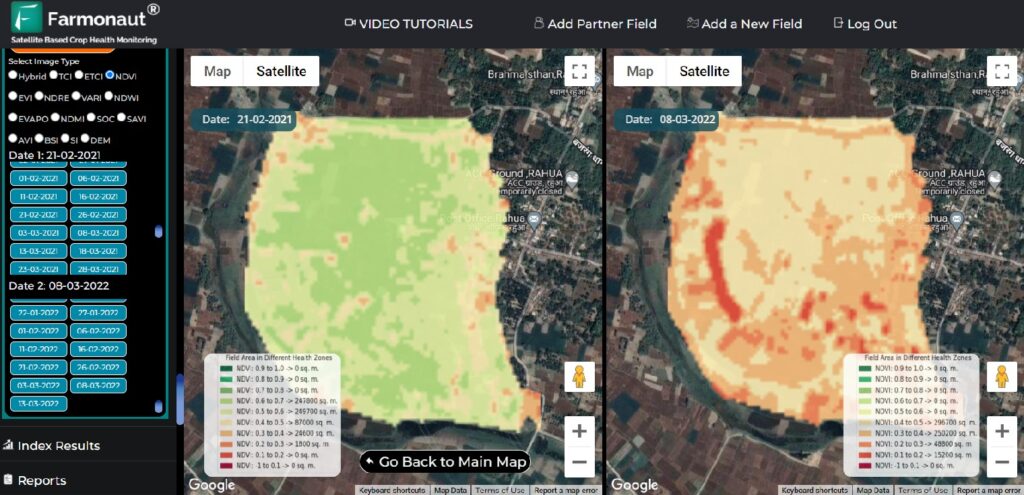Table of Contents
- Introduction
- Understanding Pasture Ecosystems
- Pasture Management: 7 Shocking Tips for Massive Growth
- Comparison Table of Pasture Management Practices and Their Impacts
- Environmental and Economic Benefits of Effective Pasture Management
- Challenges and Considerations in Pasture Management
- How Farmonaut Empowers Sustainable Pasture Management
- FAQ: Pasture Management and Sustainable Agriculture
- Conclusion
Pasture Management: 7 Shocking Tips for Massive Growth
Pasture management is a fundamental aspect of sustainable agriculture, directly influencing livestock health, forage quality, and environmental conservation. As we strive for higher productivity and ecological balance, it becomes essential to embrace sustainable pasture management practices. By understanding and implementing effective rotational grazing systems, focusing on soil health, and promoting biodiversity in grazing systems, we can achieve massive growth and enrich our farming ecosystems.
In this comprehensive guide, we explore the shocking yet research-backed tips that form the bedrock of optimal pasture management. We’ll delve into the science behind pasture ecosystems, walk through the key components of proper management, and showcase the role of innovative technologies—like those offered by Farmonaut—in taking pasture productivity and sustainability to the next level.
From grazing management strategies and soil fertility in pastures to preventing overgrazing and effective water management for livestock pastures, our actionable tips are designed to help us master every aspect of pasture management. Let’s embark on this journey toward healthier soils, greater forage quality, optimal livestock productivity, and resilient ecosystems!
Understanding Pasture Ecosystems: The Foundation of Effective Management
A pasture is a managed area where livestock graze on grasses, legumes, and other herbaceous plants. The health of a pasture is shaped by its soil quality, plant diversity, and the delicate balance between forage growth and grazing pressure. Succinctly, effective pasture management is about maintaining this equilibrium, ensuring livestock productivity and environmental conservation work hand-in-hand.
- Soil: The base of the pasture ecosystem. Healthy soils support vigorous plant growth, water infiltration, and carbon sequestration in grasslands.
- Forage and Plant Species: Grasses and legumes, managed for diversity and resilience, underpin livestock nutrition and pasture recovery.
- Grazing Animals: Cattle, sheep, goats, or other ruminants whose numbers and behavior dictate the pressure placed on plant systems.
- Water: Clean, accessible, and well-managed water sources support growth and help distribute pressure, preventing localized overgrazing.
Proper grazing management involves aligning the number of animals (stocking rate) with the area’s productivity and adapting to environmental conditions. Maintaining this balance is vital for preventing overgrazing, promoting plant regeneration, and ensuring that soil remains covered and resilient.
Did you know? Healthy pastures support microbial and insect life, enabling natural nutrient cycling and sustaining the food web from the soil up. By prioritizing the health of our pasture’s ecosystem, we set the stage for long-term viability and robust yields.
Pasture Management: 7 Shocking Tips for Massive Growth
1. Determine and Adjust Your Stocking Rate for Maximum Efficiency
Stocking rate determination is the cornerstone of sustainable pasture management practices. By calculating the number of animals we can sustainably graze over a specific area for a defined period, we ensure forage is utilized efficiently without compromising plant health. Overstocking rapidly leads to overgrazing, reduced forage quality, soil compaction, and erosion. In contrast, understocking slows down system productivity as forage is underutilized, raising weeds and reducing fertilizer cycling.
- Factors influencing stocking rates: Pasture size, forage type, soil fertility, and prevailing climatic conditions such as rainfall and temperature patterns.
- Tip: Evaluate your stocking rate annually and use digital advisory systems like Farmonaut’s Jeevn AI for real-time recommendations based on current soil and crop health metrics.
2. Implement Rotational Grazing Systems for Rapid Regeneration
Moving from continuous grazing (where animals have unrestricted access to one area) to rotational grazing systems (where pastures are divided into several paddocks and animals are rotated) is a game-changer. This method allows for periods of rest and regrowth for pastures, maximizing plant regeneration and root development.
- Rotational Grazing: Promotes even utilization, increases forage quality, and reduces uneven pressure.
- Adaptive Multi-Paddock Grazing: Takes rotational grazing further by adapting movement to changing environmental conditions and growth patterns, increasing carbon sequestration in grasslands by up to 30% and improving water infiltration rates by up to 90%.
With more rest for each paddock, soil health and plant root systems strengthen, leading to higher productivity and resilience in the face of drought or heavy rainfall—key elements for long-term conservation.
3. Maintain and Monitor Soil Fertility in Pastures
The heart of productive pastures is soil fertility. We must take proactive steps to maintain a living, nutrient-rich soil ecosystem for robust forage growth.
- Regular Soil Testing: Identify nutrient needs annually, focusing on key metrics like pH, nitrogen, phosphorus, and potassium.
- Organic Fertility Practices: Rotate livestock to naturally replenish soil with manure and urine, reducing the need for synthetic fertilizers and supporting microbial diversity.
- Soil Cover: Always ensure some ground cover remains to curb erosion and enhance water infiltration. Proper plant cover also supports carbon sequestration and healthy soil structure.
Farmonaut’s platform leverages satellite-based soil moisture and fertility maps so we can swiftly identify depleted or overused zones, integrating this data into our digital management systems via API for precision interventions.
4. Optimize Forage Species Diversity for Improving Forage Quality
A diverse mix of forage species (including native grasses and legumes like clover or alfalfa) ensures year-round nutrition for livestock, lowers reliance on chemical inputs, and improves resilience to weather changes.
- Benefits of Diversity: Enhanced nitrogen fixation by legumes, boosted forage productivity, fewer pest and disease outbreaks.
- Regular Monitoring: Frequent walk-throughs and drone or satellite checks for sward height and invasive plant outbreaks ensure optimal management.
- Adjust Sowing: Use region-suited plant varieties that mature at different times, filling food gaps and promoting regeneration during periods of rest.
By optimizing sward diversity, we not only improve forage quality but also enhance ecosystem health—directly benefiting biodiversity in grazing systems.
5. Control Weeds and Pests Naturally to Promote Biodiversity
Vigilant weed and pest management can make or break a pasture. Integrated approaches are essential to prevent damaging infestations and competition with valuable forage plants.
- Paddock Rotation: Disrupts pest life cycles, suppresses weeds, and avoids chemical buildup in soils.
- Monitor Frequently: Walk, drone, or satellite inspection helps in early detection and targeted responses.
- Judicious Inputs: Use chemicals only as a last resort, and always follow label recommendations to minimize off-target effects and preserve soil life.
Healthy soil and balanced grazing pressure support natural pest predators and beneficial insects, reducing dependency on synthetic controls and supporting conservation goals.
6. Implement Water Management for Livestock Pastures
Water is essential for both livestock productivity and sustained plant growth. Efficient water management for livestock pastures prevents overgrazing near natural streams, reduces soil compaction, and promotes an even grazing spread.
- Off-Stream Systems: Install remote water points and troughs across paddocks to distribute pressure effectively.
- Monitor Water Quality: Ensure sources remain uncontaminated by livestock feces or agricultural runoff, supporting animal and soil health.
- Use Tech for Monitoring: Farmonaut’s real-time moisture maps and seasonal precipitation analysis enable data-driven irrigation and drought preparedness.
Managing water resources wisely is key to adapting to changing climate conditions and maintaining healthy pastures year-round.
7. Harness Technology & Monitoring for Adaptive Pasture Management
Continuous monitoring of pasture systems with the latest agricultural technology can drastically improve our agility in decision-making, optimize input use, and prevent pasture degradation.
- Satellite Monitoring: Use Farmonaut to access NDVI vegetation indices, real-time sward height, and soil moisture maps to identify underperforming areas or signs of overgrazing early.
- Jeevn AI Advisory: Personalized, adaptive recommendations drive record efficiency in matching animal numbers to available forage and adjusting for weather abnormalities.
- Blockchain & Traceability: Maintain transparent farm records, monitor input applications, and guarantee traceable, sustainable production from pasture to plate.
With mobile and API solutions, Farmonaut empowers us to scale sustainable pasture management to any operation—small family farms, cooperatives, or agribusinesses.
Comparison Table of Pasture Management Practices and Their Estimated Impacts
| Pasture Management Practice | Estimated Forage Yield Increase (%) | Livestock Health Improvement (1-5) | Impact on Biodiversity (1-5) | Sustainability Benefit |
|---|---|---|---|---|
| Rotational Grazing Systems | 25–35 | 5 | 5 | Reduces overgrazing, improves plant regeneration, and supports carbon sequestration in grasslands. |
| Optimal Stocking Rate Determination | 10–20 | 4 | 4 | Prevents under- or over-grazing and caters to pasture carrying capacity. |
| Soil Fertility Management | 10–25 | 5 | 4 | Reduces need for chemical fertilizers, supports healthy soil biodiversity. |
| Forage Species Diversification | 13–19 | 4 | 5 | Improves resilience, enhances plant nutrition, and bolsters ecosystem services. |
| Integrated Weed & Pest Management | 7–13 | 3 | 4 | Reduces chemicals, supports pollinators and beneficial insects. |
| Water Management Practices | 10–15 | 5 | 3 | Prevents soil degradation, supports even grazing distribution, and ensures animal health. |
| Tech-Driven Adaptive Monitoring | 20–30 | 5 | 5 | Enables real-time interventions, rapid response to challenges, and long-term sustainability. |
Environmental and Economic Benefits of Effective Pasture Management
Adopting best pasture management practices yields transformative benefits for both the environment and farm finances:
- Soil Conservation: By maintaining continuous cover and preventing overgrazing, we reduce erosion, increase water infiltration, and enhance soil fertility. This, in turn, supports sustained forage growth and robust carbon sequestration in grasslands.
- Biodiversity in Grazing Systems: Diverse pasture supports a wide range of pollinators, birds, and beneficial insects, increasing overall ecosystem health and resilience to disease and climate variability.
- Carbon Sequestration: Adaptive and rotational grazing, coupled with strong root development, stores atmospheric carbon in the soil, making pastures a net carbon sink. Use Farmonaut’s carbon footprint monitoring tools to track progress and compliance.
- Economic Viability: Efficient management reduces the need for supplemental feed and increases livestock weight gain, improving bottom lines. With reliable monitoring from apps and satellite insights, input costs decrease and productivity soars.
With these benefits, sustainable pasture management is not just about stewardship—it’s a powerful strategy for profitability and environmental leadership.
Challenges and Considerations in Pasture Management
Despite the clear advantages, several challenges can impede our progress toward optimal pasture management:
- Climate Variability: Unpredictable weather patterns can reduce forage production and affect water availability, demanding adaptive strategies and resilient pasture species.
- Labor and Infrastructure: Systems like rotational and adaptive grazing may require extra labor, new fencing, and investment in watering points.
- Training and Knowledge: Up-to-date education around sustainable practices and technology adoption is critical for success. Regularly consult digital platforms and extension resources.
Technology—such as Farmonaut’s precision agriculture solutions—dramatically lowers these barriers, providing timely, actionable insights to all stakeholders, whether managing a small family area or thousands of hectares.
How Farmonaut Empowers Sustainable Pasture Management
Farmonaut is redefining the future of sustainable agriculture by combining cutting-edge satellite data with the power of AI and blockchain. Here’s how we can utilize Farmonaut to drive next-level pasture management:
- Satellite-Based Crop and Pasture Health Monitoring: Receive real-time information about soil quality, forage patterns, and signs of overgrazing instantly on mobile or web.
- Jeevn AI Advisory System: Get personalized advice, weather forecasts, and expert strategies tailored to your pasture type, stocking rate, and seasonal requirements.
- Blockchain Traceability: Ensure transparent, tamper-proof records of input usage, grazing rotation, and harvest—all critical for sustainable supply chain verification.
- Resource Management: Optimize water delivery, fencing schedules, and resource movements to keep costs low and productivity high.
- Carbon Footprinting: Track your grassland’s contribution to carbon sequestration, document compliance for certifications, and unlock sustainability-linked incentives.
- Accessibility: All features are accessible worldwide via Android, iOS, web/browsers, and APIs for maximum scalability and ease of use.
Whether you manage a family farm, a cooperative, or a multinational agribusiness, Farmonaut’s subscription services are scalable, affordable, and designed to empower sustainable pasture management at any scale.
FAQ: Pasture Management and Sustainable Agriculture
What is the optimal stocking rate for my pasture?
The optimal stocking rate depends on pasture size, forage yield, soil fertility, and climatic conditions. Regular soil testing, forage biomass measurement, and monitoring with precision tools (like Farmonaut) help determine the right animal number for your farm, preventing overgrazing or underutilization.
What are the main benefits of rotational grazing?
Rotational grazing improves forage growth by allowing rest periods, prevents overgrazing, increases plant diversity, and enhances soil structure, water retention, and carbon sequestration in grasslands.
How do I maintain soil fertility without synthetic fertilizers?
Utilize integrated pasture management strategies such as strategic grazing distribution, livestock manure cycling, inclusion of legumes for nitrogen fixation, and regular soil testing to maintain fertility naturally.
How can Farmonaut help with pests and weed management in pastures?
Farmonaut’s satellite imagery can spot weedy or pest-infested patches, enabling targeted interventions and reducing the need for broad-spectrum chemical applications.
What is the impact of biodiversity on pasture systems?
Enhanced biodiversity improves ecosystem resilience, livestock health, and productivity. Diverse plant communities support beneficial insects, enhance nutrient cycling, and reduce vulnerability to climatic stresses.
Conclusion: Elevate Your Pasture—Elevate Your Farm
Effective pasture management is the single most fundamental step we can take for sustainable agriculture, robust livestock health, improved forage quality, and meaningful environmental conservation. Embracing structured rotational grazing systems, focusing on soil fertility, diversifying plant species, integrating new technology, and consistently monitoring our systems equips us to unlock massive growth while nurturing the ecosystem.
With affordable, data-driven solutions like those from Farmonaut, pasture and livestock management can be elevated from reactive guesswork to proactive stewardship—boosting productivity, lowering costs, and championing sustainable practices for generations.
Let’s work together for thriving pastures, healthy soils, strong livestock, and prosperous farming communities.






















